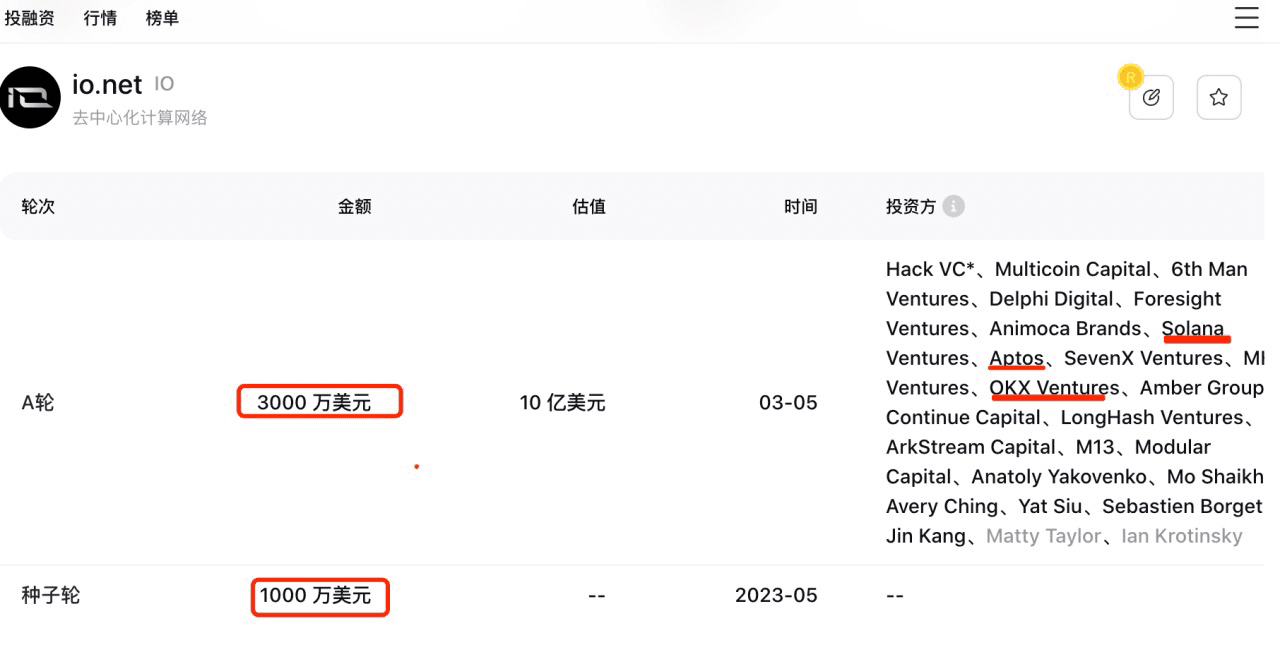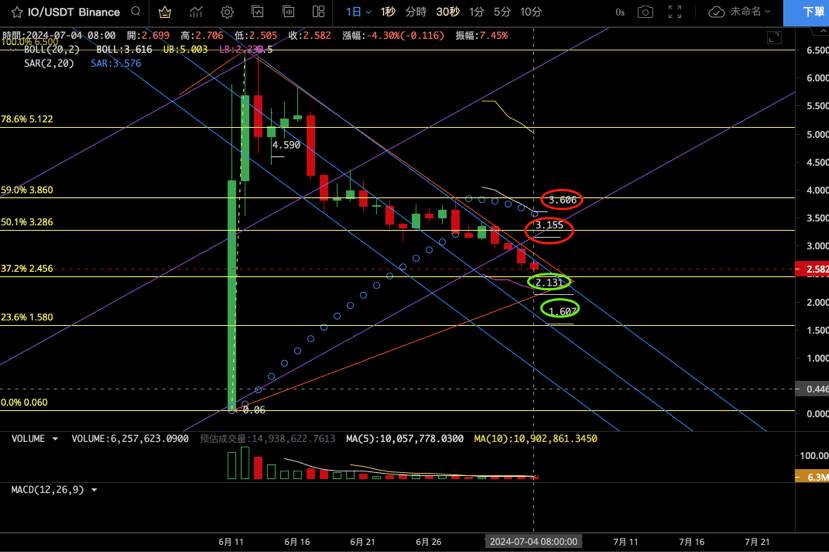Project introduction: io.net is a decentralized computing network that supports the development, execution, and expansion of ML applications on the Solana blockchain, combining 1 million GPUs to form the world's largest GPU cluster and DePIN.
io.net solves this problem by aggregating GPUs from underutilized resources such as independent data centers, crypto miners, and crypto projects like Filecoin and Render, which are combined in the Decentralized Physical Infrastructure Network (DePIN) to give engineers access to massive amounts of computing power in a system that is accessible, customizable, cost-effective, and easy to implement.
io.net is a distributed GPU system based on Solana, Render, Ray, and Filecoin, designed to leverage distributed GPU resources to solve computing challenges in the fields of AI and machine learning.
Track: Depin+Ai

io has raised $40 million through two rounds of fundraising, with a latest valuation of $1 billion and a maximum supply of 800 million coins. On June 7, Binance launched the 55th new coin mining, with an initial circulation of 95 million coins. At that time, the predicted opening price of io published on Binance Square was expected to be around $5, with a strong pressure of $10. After the launch, it reached a high of $5.8 and then fell to $3.5, rebounding to a high of $6.5. It peaked at $5.8 for the second time and then fell again. On June 18, the io analysis strategy mentioned that 3.5 supported the rebound pressure of 4.2. The first support for spot positions was around 3.5. If it broke, it would look at around 3. If it broke 2.9, it would look at the 2.5-2.3 range. Today, it just reached the third position.
 #
#
Regarding mining: For users who participated in the io test network in April and May, the total cost of leasing H100+ bandwidth was between 130,000 and 150,000 people per month, the cost of producing io was around 2 US dollars, the secondary price was 5-6 US dollars, and the rate of return was around 3 times. However, the exchange rate of mining in June was 1000:1, and the cost of producing io was around 6 US dollars. Based on the secondary price of 2.5 US dollars, it is a direct loss of 60%. This shows that mining cannot be simply mined, withdrawn and sold. It must be combined with secondary market strategies. Hedging is the best defense.
In the third quarter, the io mainnet will start staking, requiring GPU nodes to stake io as a guarantee of GPU stability and quality. There will inevitably be a rebound after staking is started. At the same time, okx has invested in io but has not yet gone online. It is likely to be listed on okx. These two are potential positives. At the same time, from the market value, io's benchmark RNDR has a market value of 2.6 billion US dollars, and io's current market value is 247 million US dollars. It can be seen that it is entirely possible for io to rise to 10 US dollars in the medium term. Pay attention to the rebound and stabilize at 4 US dollars to start the second rise.
Spot prices around 2.5 can be used for bottom-fishing and layout. If the position is heavy and rebounds to 3.1-3.7, reduce the position. If the price can reach 2--1.6 below, you can cover the position. This is basically the cost position of early miners. #io项目 $IO






